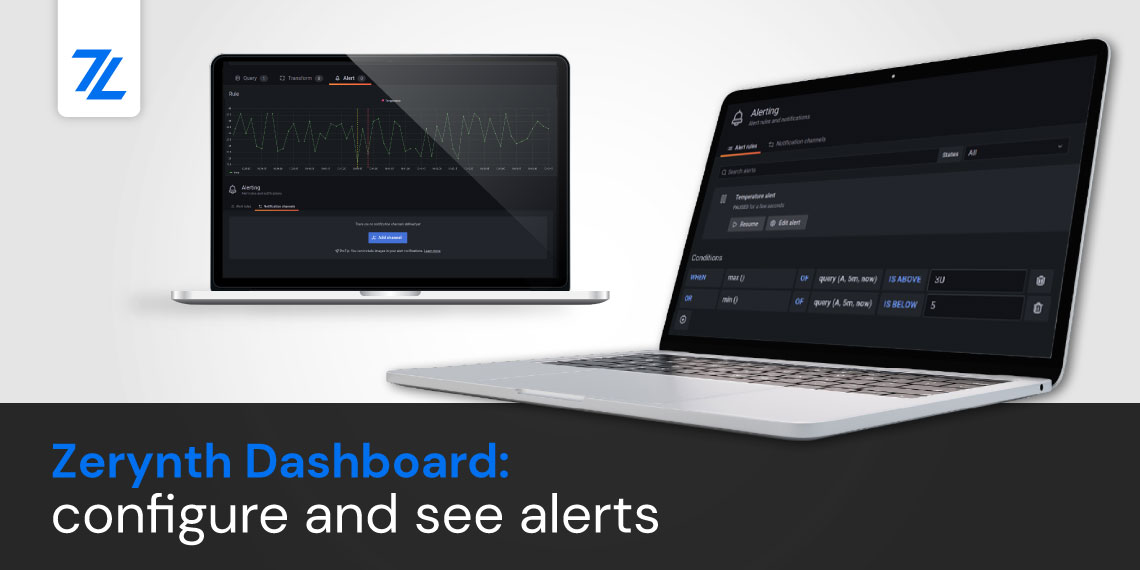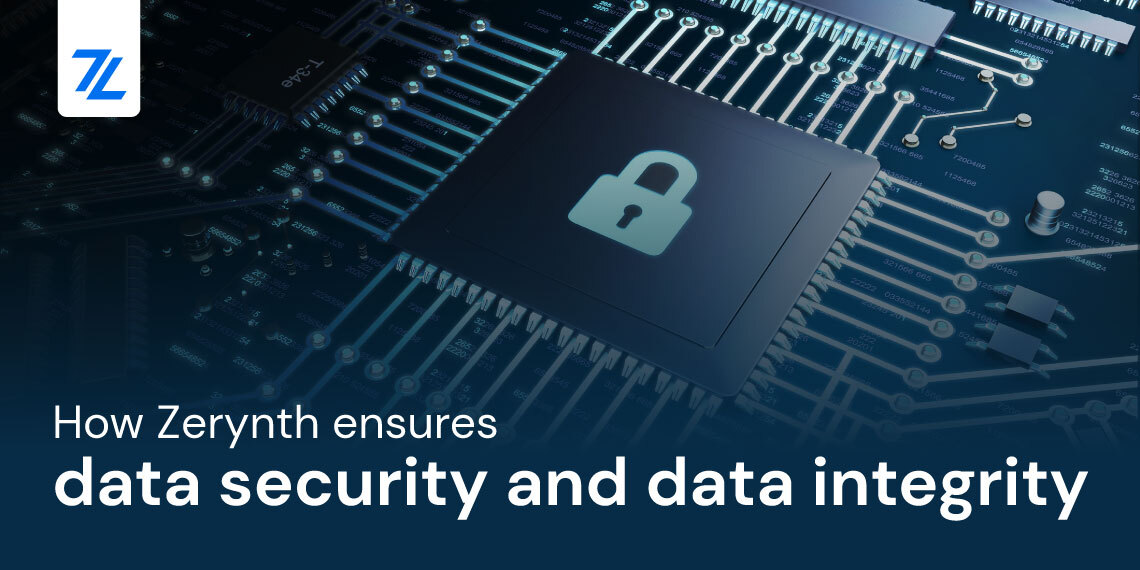Over the past few years, the advantages and benefits related to the concepts of Industry 4.0 have given more and more concrete feedback to those who have chosen to invest in a complete digitalization of their production processes and more efficient plants.
Zerynth products have been developed and designed to embrace this concept and enable any type of industrial machinery for real-time monitoring and, where possible, for bidirectional communication with the intelligence on the machine or device (PLC, Inverter, etc.).
Being able to take data from industrial machinery is becoming more and more important with increasingly interesting prospects. Real-time and continuous IoT monitoring, targeted at specific parameters, allows enabling different scenarios that include:
- Production efficiency: by selecting the correct dataset (piece counter, limit switches, etc.) and calculating the times of the various phases during production cycles (tooling, standby, etc.), the OEE (Overall Equipment Effectiveness) is calculated to understand the machine’s performance and take action to improve it.
- Consumption optimization: punctual consumption measurement on each machine distributes the cost of energy for the individual product and helps make revamping decisions for the replacement of the most energy-intensive components.
- Predictive Maintenance: Critical components are monitored with decision tree algorithms or machine learning that can prevent a possible failure reliably and reduce machine downtime.
- Warehouse management: The products are tracked in real-time from the order office, the production department, and storage in the warehouse; thus, certifying each step and always keeping available stock updated.
How do you extract data from industrial machinery?
Obviously, this depends on the type of machinery, which can be put into 2 macro groups regarding the picking method:
- Analog-Digital Retrofitting: direct acquisition of the electrical signals on the electrical panel both in analog and digital states
- Bidirectional Digital Communication: acquisition through message exchange regulated by a specific industrial standard protocol with “talking” and “intelligent” elements (usually the PLC).
Zerynth electronic boards enable both acquisition modes in a quick and non-invasive way, either in single mode (retrofitting mode only, or only two-way communication) or simultaneously (enabling both modes in parallel).
Let’s look at them in detail.
Analog-Digital Retrofitting
If an industrial machine is old and does not have any kind of “intelligence” or “talking” element in its electrical panel, the only way to extract any monitoring information is by Retrofitting the machine.
Reading an electrical signal generated on the electrical panel may seem like a risky and unsafe procedure, but, with the right precautions and careful analysis, it is possible to “spy” on all the signals without the machine “noticing” us or receiving disturbances that would compromise its correct functioning.
In order to not generate disturbances that could be harmful to the system, Zerynth products are equipped with galvanic isolation (Figure 1) to decouple the two electric circuits (the machine’s electrical panel and Zerynth electronic card for measuring signals) by passing only the signal of interest and eliminate spurious current returns, overvoltage, and grounding problems.
Figure 1. Galvanic Isolation in the Zerynth EXP-AIN between the acquisition circuitry and that of internal signals
Thanks to the isolation, it is also possible to correctly measure voltages and currents that are completely independent of the card’s power supply circuit of the card that performs the measurement, which could have very different voltage references.
Reading live signals
The analog voltage signals (usually 0-10 Volt proportional signals) can be read by connecting them in parallel to the signal present in the electrical panel as shown in the figure:
Figure 2. Electrical circuit for 4ZeroBoxvoltage pickup
To read the voltage value measured on the sensor, the following transfer function is obtained from the circuit
Where:
- ADC read = value read from the card on the internal ADC (Analog-to-Digital Converter)
- Fullscale ADC = full-scale value of the internal ADC
- V ref = reference voltage of the internal ADC
- Gain opamp = operational amplifier gain
With this type of withdrawal, the system is not affected in the least by the presence of the monitoring card. In fact, if the monitoring board fails, the circuit connected in parallel to the system will result in an open circuit, due to the operational amplifier’s high input resistance.
The possibility of not interfering with the machine’s production process is one of the greatest advantages of the system.
Reading current signals
Analog current signals (usually 4-20 mA proportional signals) can be read by connecting, in series, to the signal present on the electrical panel as shown in the figure:
Figure 3. The electrical circuit for the 2-wire current drawing of the 4ZeroBox
Similarly, as in the case of the voltage reading, the following transfer function is obtained from the circuit in the figure:
Where:
- ADC read = value read from the card on the internal ADC (Analog-to-Digital Converter)
- Fullscale ADC = full scale value of the internal ADC
- V ref = reference voltage of the internal ADC
- Gain opamp = gain of the operational amplifier
- R shunt = current signal’s shunt resistance (reading) (124 Ohm)
Being a series withdrawal, if this signal is also managed by other elements of the electrical panel, the withdrawal circuit must guarantee 2 conditions:
- The current loop must always be closed under any circumstance: opening the current loop would interrupt the sensor signal, rendering the reading useless
- The drop in the reading resistance must be negligible on the voltage branch where the signal current flows, otherwise, the downstream components couldn’t receive a sufficient voltage for correct operation.
Example → 124 Ohm x 0.02 mA = 2.48 Volts negligible in a 24 Vdc branch
Figure 4. The electrical circuit for the 2-wire current drawing of the 4ZeroBox in series with the PLC
Bidirectional Digital Communication
If the machinery is modern, declared 4.0 ready, and has an intelligent and “talking” element (for example a PLC), then it would be possible to implement the data retrieval mode by exchanging two-way messages.
What is the difference?
Compared to the case of analog-digital retrofitting, to enable the exchange of messages, two (2) pieces of information are essential for collecting during analysis of the machine specifications:
- Communication bus: physical communication channel between systems on specific hardware peripherals (for example RS485, CAN Bus, Ethernet).
- Communication protocol: Format and composition of the messages to be exchanged by the systems (for example MODBUS RTU or TCP, OPC-UA)
Once it is established which bus and which communication protocol will be used, to actually establish communication and to know which data are available for reading and/or writing within the PLC, this must be communicated by the machine’s supplier (Figure 5):
- Connection parameters (for example IP address, port, etc.)
- The map of the variables or internal registers: list of the quantities available within the PLC
Figure 5. Block diagram for bidirectional communication between Management Software and PLC
Once all the specifications have been collected, Zerynth’s products will be able to communicate with the PLC bidirectionally and, because of the Zerynth Device Manager, the monitoring data (for example the number of pieces produced) or remote commands (for example the sending of a new order) can be managed by management software through standard API requests.
If you are interested in learning more about the scenarios that our hardware products and our IoT platform can enable, you can visit our blog and read use cases and testimonials from our partners and customers about the benefits that the Zerynth platform has brought to their respective companies.
Share This Story, Choose Your Platform!
Follow Zerynth on
Latest Posts










